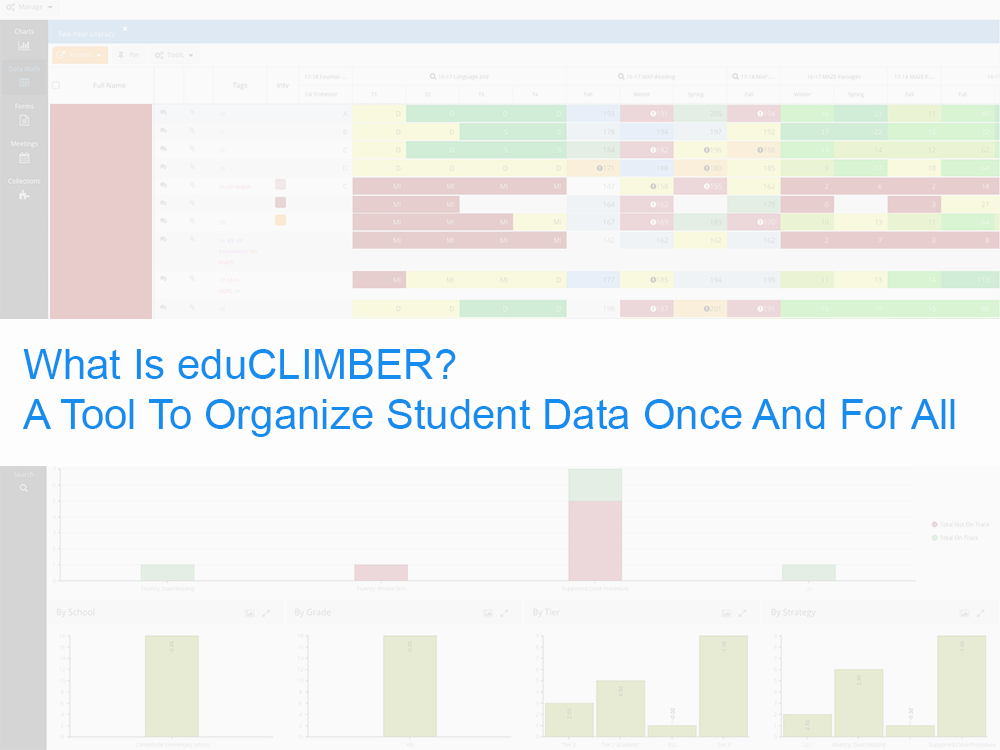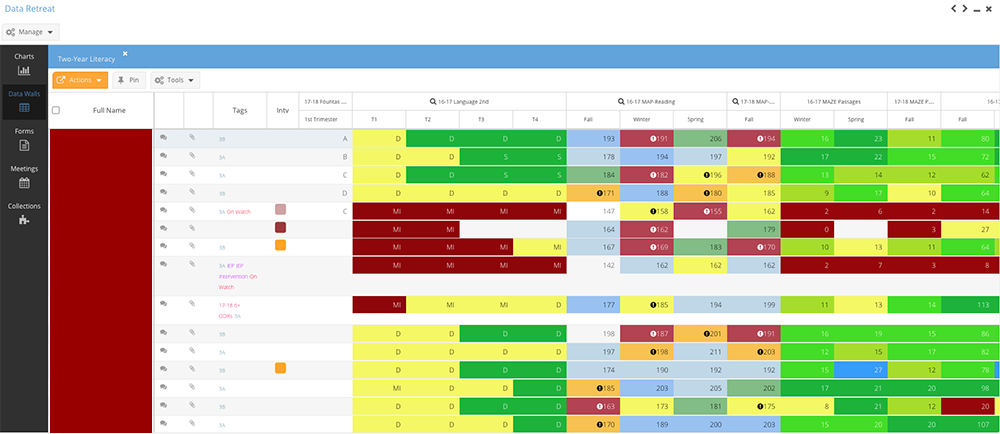
eduCLIMBER: A Tool To Organize Student Data Once And For All
by TeachThought Staff
This post is sponsored by Illuminate Education, a platform designed to organize actionable data that allows educators to make informed decisions that will help students succeed. We created the content free from editorial influence other than the goal of clarifying the context for data in education and then informing you about the features of Illuminate’s eduCLIMBER within that context.
In outcomes-based education, the precision (what is being measured) and effectiveness of assessments (how well it was actually measured) drive the quality of instruction.
Of course, the goal is to provide data to refine planned instruction and in this context, the visibility and accessibility of that data can make or break the whole planning process. This makes having a plan for the data before the assessment is even given important. In 18 Inconvenient Truths About Assessment, Heick discussed the importance of planning for the data ahead of time.
“Most teachers worth their salt can already guess the range of student performance they can expect before they even give the assessment. Therefore, it makes sense to design curriculum and instruction to adjust to student performance on-the-fly without Herculean effort by the teacher. If you don’t have a plan for the assessment data before you give the assessment, you’re already behind.”
This isn’t easy to do once, much less daily.
The Challenge Of Using Data In K-12
In Using Data In The Classroom To Meaningfully Affect Learning, Terry Heick talked about the challenge of using data in the classroom.
“..most planning templates in most schools used by most teachers on most days don’t allow for data to be easily absorbed. They’re not designed for students, they’re designed for curriculum. Their audience isn’t students or communities, but rather administrators and colleagues…Depending on what grade level and content area you teach, and how your curriculum is packaged, what you should and are reasonably able to do with data might be different. But put roughly, teachers administer quizzes and exams, and do their best to ‘re-teach.’ Even in high-functioning professional learning communities, teachers are behind before they give their first test. Their teaching just isn’t ready for the data.”
Though Heick was describing challenges to using data as they relate to curriculum mapping, the traditional teaching ‘unit,’ and lesson planning forms in general, the difficulties are broader than that. Collecting data consistently is critical to ensure it represents the most up-to-date snapshot of student understanding possible. Proficiency can atrophy or grow, sometimes very quickly.
These are all challenges eduCLIMBER wants to help teachers solve.
What Are eduCLIMBER’s Key Features?
eduCLIMBER’s is built around the following key features they hope make life easier for teachers:
- Easily import data from nearly any standardized norm-referenced, criterion-referenced, formative/summative assessment.
- Identify and create a continuum of multiple supports for all students.
- Evaluate and monitor the effectiveness of interventions within districts.
- Save yourself the time and effort of having to correlate and share data with various stakeholders.
There are many features built into most modern platforms that are worth a look, and for eduCLIMBER, the concept of a tool designed to save teachers time is intriguing. But the most compelling feature of eduCLIMBER might be how it provides a central location for dozens of data forms and outputs. This not only saves time but increasing the visibility of diverse data. Behavior, reading levels, standardized test results, social-emotional assessment data and more are available providing a more authentic and compelling ‘snapshot’ of each child.
How eduCLIMBER Hopes To Help
In the data-reform and outcomes-based education era, the ‘whole child’ data described above is both refreshing and convenient for teachers. DIBELS data can be not only predictive for AimsWEB data but can illuminate it in hindsight as well. When trying to figure out ‘how to move kids to proficiency,’ the more complete that data is, the more likely it is to be useful–and simply providing a list of academic standards that students are and are not proficient in is of limited value.
It’s useful for teachers to see students ‘color-coded’ in this way but the next step is figuring out why they’re color-coded that way. Creating a single place to import, analyze and visualize a wide array of academic and non-academic data provides a nice jumping-off point for educators to begin this analysis and/or discussion with colleagues in their PLN.

What Data Sources Are Available In eduCLIMBER?
Student Information: Attendance, behavior, transcript
Assessment: NWEA, Fountas & Pinnell, STAR, AimsWeb, DIBELS, iReady, FAST and more
State Assessments
National Assessments: SAT, ACT, PSAT, AP
Social Emotional: SAEBRS, BEST, Review 360
Other Key eduCLIMBER Features
- Monitor student progress toward goals via benchmark targets and percentile ranks
- Import or record data from a variety of assessment types to determine ongoing student needs
- Analyze student behavior progress
- Create interactive district-level data dashboards
- Alerts when students meet thresholds for early intervention and prevention
- Build meaningful, visual reports for parents and staff with eduCLIMBER’s smartFORMS
- Receive mass or individual notifications for specific form completions
- Set rigorous yet realistic achievement targets to be met by students
- Generate, manage, and modify SLOs and professional strategies for educator effectiveness
Learning More About eduCLIMBER
You can read more about eduCLIMBER.
You can also request a free demo of eduCLIMBER or contact them with any questions.
